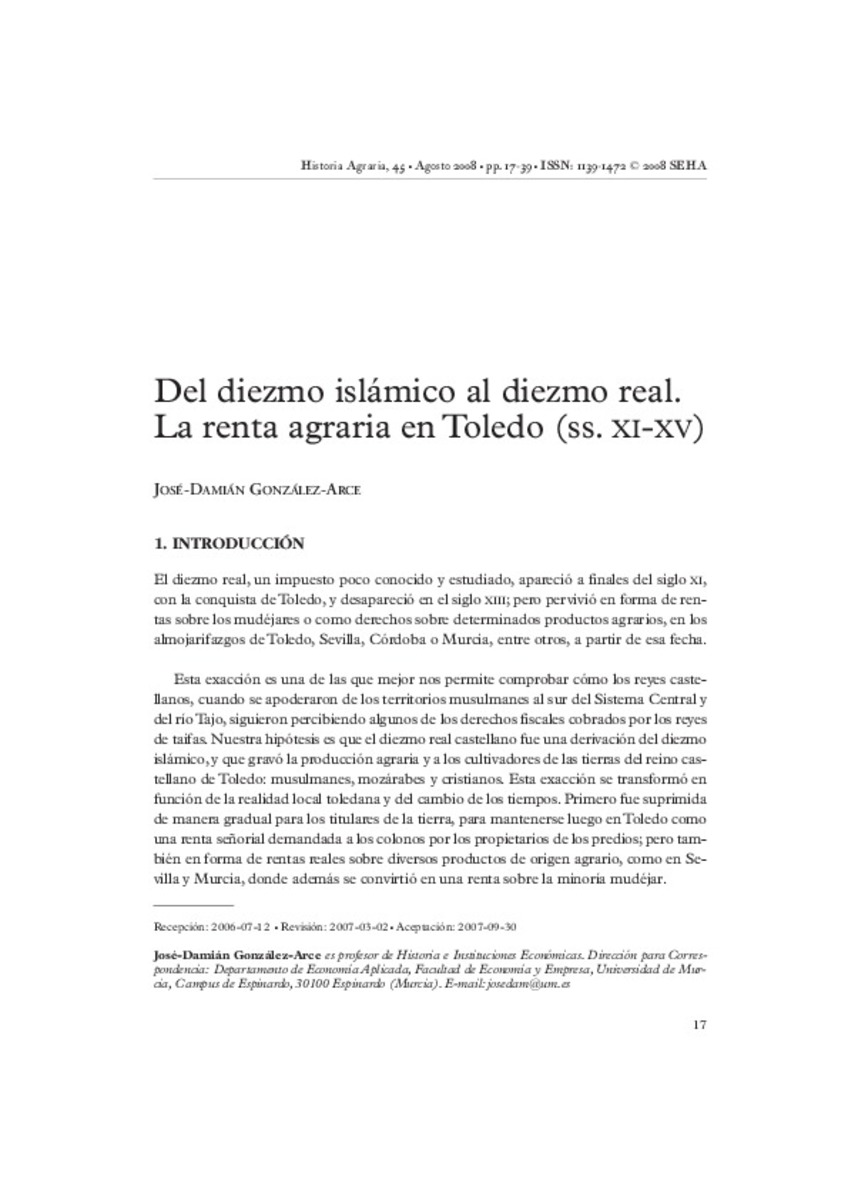Mostrar el registro sencillo del ítem
Del diezmo islámico al diezmo real. La renta agraria en Toledo (ss. XI-XV)
| dc.contributor.author | Gómez Arce, José-Damián | |
| dc.date.accessioned | 2016-07-20T17:07:32Z | |
| dc.date.available | 2016-07-20T17:07:32Z | |
| dc.date.issued | 2008-08 | |
| dc.identifier.issn | 1139-1472 | |
| dc.identifier.uri | http://hdl.handle.net/10234/161822 | |
| dc.description.abstract | This paper is based on the hypothesis that lands conquered by Christians in the southern area of the central mountain system were incorporated into the Castilian Crown as legally and fiscally independent spaces. Christian kings, the new monarchs of these states, began to take advantage of the old Islamic taxes, but now as feudal lords. Therefore, these taxes turned into royal income, as it was the case of the Islamic tithe, considered an agrarian income by Christians. This new income received different names like aloxor, decima, or royal tithe. | ca_CA |
| dc.format.extent | 23 p. | ca_CA |
| dc.format.mimetype | application/pdf | ca_CA |
| dc.language.iso | spa | ca_CA |
| dc.publisher | Sociedad Española de Historia Agraria (SEHA) | ca_CA |
| dc.relation.isPartOf | Historia agraria: Revista de agricultura e historia rural, nº 45, p. 17-39 | ca_CA |
| dc.rights | © SEHA | ca_CA |
| dc.rights.uri | http://rightsstatements.org/vocab/InC/1.0/ | * |
| dc.subject | Aloxor | ca_CA |
| dc.subject | Toledo | ca_CA |
| dc.subject | Muslim fiscal system | ca_CA |
| dc.subject | Diezmo | ca_CA |
| dc.subject | Tithe | ca_CA |
| dc.title | Del diezmo islámico al diezmo real. La renta agraria en Toledo (ss. XI-XV) | ca_CA |
| dc.type | info:eu-repo/semantics/article | ca_CA |
| dc.subject.jel | N34 | ca_CA |
| dc.subject.jel | N54 | ca_CA |
| dc.rights.accessRights | info:eu-repo/semantics/openAccess | ca_CA |
| dc.relation.publisherVersion | http://www.historiaagraria.com/numero.php?n=45 | ca_CA |







